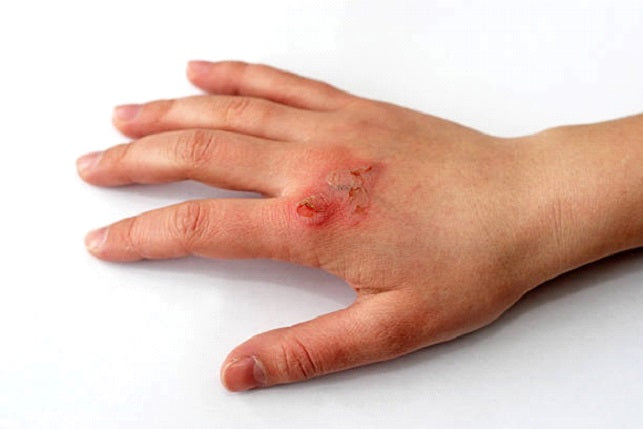Mouth ulcers, skin ulcers, and gastric ulcers: regardless of where they appear, ulcers are wounds that cause a lot of discomfort and even health complications. Check out the most common types of ulcers and how to treat and prevent each one.
The bedsores or pressure ulcers, for example, are quite common in the elderly. People who have been hospitalized for a long time may also be this type of skin ulcer.
Despite the discomfort, all ulcers can be treated. See how to follow
What Are Ulcers

They appear anywhere on the body, and that is why there are several types of ulcers. In addition, the symptoms may be different.
The causes also vary according to the type of injury, but in general, ulcers develop because of:
⦁ Inadequate food;
⦁ Bad habits like alcohol abuse or smoking;
⦁ Stress;
⦁ Bacteria like Helicobacter Pylori;
⦁ Use of certain medications;
⦁ Genetic factors.
Most Common Types of Ulcers

Peptic ulcers

⦁ Gastric: ulcer in the lining of the stomach;
⦁ Esophageal: ulcer in the wall of the esophagus;
⦁ Duodenal ulcer: ulcer that arises in the duodenum (upper portion of the small intestine).
Causes & Risk Factors

Other possible causes of peptic ulcers are inflammation of these organs after an infection caused by the bacteria H. pylori or by prolonged or excessive use of painkillers and other medications.
Symptoms

⦁ Stomach ache;
⦁ Burning;
⦁ Swelling;
⦁ Gases;
⦁ Feeling of fullness;
⦁ Nausea and vomiting;
⦁ Chest pain;
⦁ Weight loss;
⦁ Heartburn.
Venous Ulcers

In such cases, the blood has a very difficult time returning to the heart. They form below the knee and in the ankle's inner area and take a long time to heal completely.
Arterial Ulcers

Arterial or ischemic ulcers are also open wounds that form in places such as the ankle, feet, fingers, and heels, for example.
In fact, inadequate blood flow damages arteries and causes arterial ulcers. Some of them take a long time to heal, and you need to be very patient and careful.
Skin Ulcers

Skin ulcers or bedsores affect patients with low mobility or people with special needs.
In fact, they are like bruises on the skin that form due to lack of movement. People who use wheelchairs to get around, for example, may have this type of skin injury.
Mouth Ulcers

Genital Ulcers

However, genital ulcers can also occur due to trauma, inflammation, or allergic reactions, for example.
How to Treat

Medicines

Antibiotics such as amoxicillin, for example, are prescribed by the doctor to fight bacterial ulcers.
Antivirals are used in cases of infections caused by viruses.
In fact, if the suspicion is that the ulcer has to do with the misuse of medicines, the treatment will consist of suspending the use of the medicine that made you sick.
Finally, other therapeutic approaches rely on antacids or other medications indicated by a doctor to decrease stomach acid or protect the stomach from excess acid.
Some examples are:
⦁ cimetidine, which decreases acid secretion in the body;
⦁ scopolamine (Buscopan), which relieves pain;
⦁ omeprazole, which protects the lining of the stomach and duodenum - inhibiting acid production
Healthy Eating

In fact, a more balanced diet helps to prevent infections that lead to ulcers and other diseases.
Lifestyle Changes

⦁ Change position during the day;
⦁ To exercise;
⦁ Keep your legs elevated at certain times of the day;
⦁ Wear compression stockings;
⦁ Drink more water;
⦁ Reduce salt consumption.
Surgery







